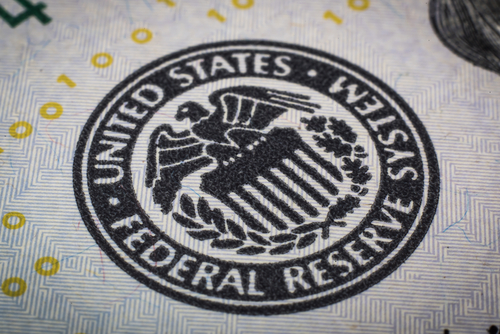
 As the Board of Governors of the Federal Reserve System points out, Jerome Powell was appointed to a four-year term on Feb. 5, 2018. With the Fed Chair’s term expiring in February 2022, there has been much uncertainty as to whether he would be reappointed or replaced.
As the Board of Governors of the Federal Reserve System points out, Jerome Powell was appointed to a four-year term on Feb. 5, 2018. With the Fed Chair’s term expiring in February 2022, there has been much uncertainty as to whether he would be reappointed or replaced.
Powell’s first term as the Chair of the Fed began in 2018, after being nominated by President Trump in November 2017. If reappointed, Powell will serve another four years, where he will guide the nation’s short-term monetary policy and become the Federal Open Markets Committee’s (FOMC) chair.
During a Nov. 22 announcement, President Biden said that he’s renominating Powell for another term for the chair position of the Board of Governors of the Federal Reserve System. President Biden also announced that Lael Brainard has been nominated for the vice chair position of the Board of Governors of the Federal Reserve System. With the Fed vice chairman for supervision resigning at the end of 2021, these series of events are providing President Biden with additional nominations to promote his policies.
Understanding the Federal Reserve’s Influence on the Markets
Similar to a chief executive officer, the chair is entrusted to carry out the mandate of the Fed. The primary foci include influencing short- and long-term interest rates, maintaining price stability and encouraging a balance in employment.
The chair of the FOMC is the steward for the nation’s monetary policy by adjusting the federal funds rate, discount rate and buying/selling of government securities to support the economy in its role in fulfilling its economic goals.
How President Biden’s Decision is Expected to Impact Markets
With Brainard having a favorability for fintech and cryptocurrencies and the ability to curry favor with progressives due to her desire for strong bank regulations, her nomination will provide the market with greater stability in conjunction with Powell’s renomination. This is due to Powell’s past four years of steering the market through its challenges, especially with COVID-19. With Powell already communicating the timeline of tapering and when the Fed is likely to increase rates, it should provide greater certainty for the markets.
Additionally, the investment community believes the markets will perceive Brainard as more politically focused due to her contributions to Hillary Clinton’s presidential ambitions in 2016. With Brainard expected to consider and strongly influence the FOMC’s actions on the 2022 midterm elections, she’ll likely lobby the committee to raise interest rates deeper into 2022 after the “tapering” or bond purchasing schedule is complete, compared to the earlier path under Powell’s lead alone.
Political Implications
According to a Nov. 19 statement in support of a Fed Chair other than Jerome Powell and who is committed to addressing climate change, Rhode Island Sen. Sheldon Whitehouse and Oregon Sen. Jeff Merkley made their thoughts clear on how they want the nomination process to not go in favor of Powell.
While Powell has been renominated, he’ll certainly face Congressional pressure during confirmation hearings and beyond if he’s indeed confirmed for a second term. However if the Federal Reserve nomination process plays out for Biden, Powell and Brainard, the FOMC will certainly have its policy influenced by more than President Biden.

